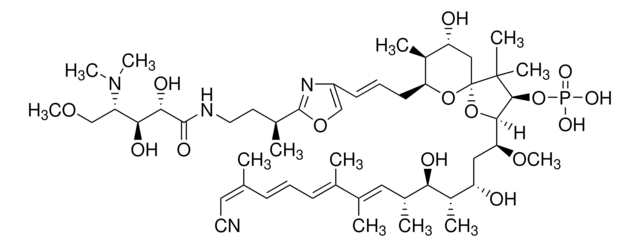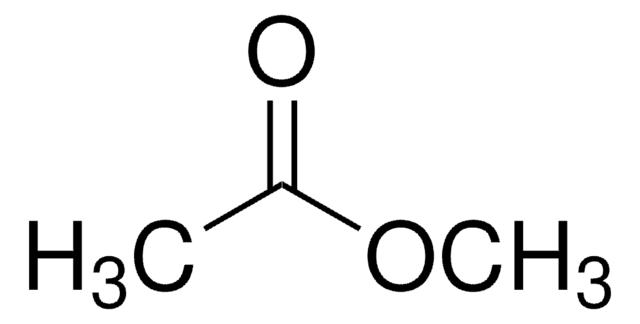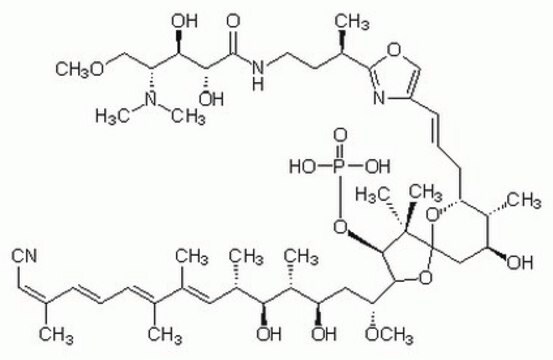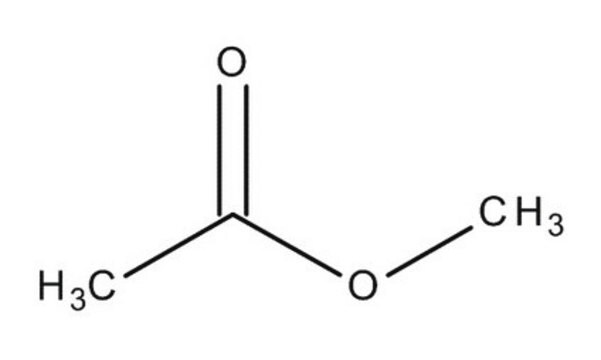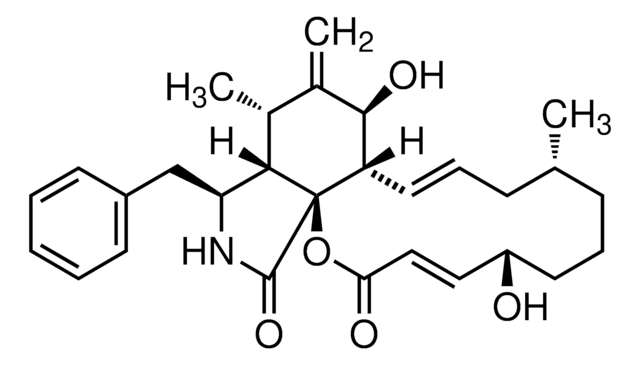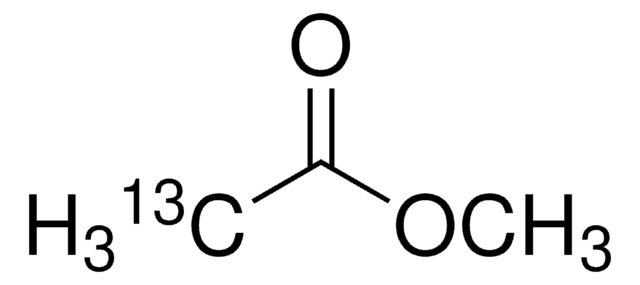45997
Methyl acetate
analytical standard
About This Item
Prodotti consigliati
Grado
analytical standard
Livello qualitativo
Densità del vapore
2.55 (vs air)
Tensione di vapore
165 mmHg ( 20 °C)
Saggio
≥99.9% (GC)
Temp. autoaccensione
936 °F
Durata
limited shelf life, expiry date on the label
Limite di esplosione
16 %
tecniche
HPLC: suitable
gas chromatography (GC): suitable
Indice di rifrazione
n20/D 1.361 (lit.)
n20/D 1.362
P. ebollizione
57-58 °C (lit.)
Punto di fusione
−98 °C (lit.)
Densità
0.934 g/mL at 25 °C
applicazioni
cleaning products
cosmetics
environmental
flavors and fragrances
food and beverages
personal care
Formato
neat
Stringa SMILE
COC(C)=O
InChI
1S/C3H6O2/c1-3(4)5-2/h1-2H3
KXKVLQRXCPHEJC-UHFFFAOYSA-N
Cerchi prodotti simili? Visita Guida al confronto tra prodotti
Descrizione generale
Applicazioni
- Quantitative analysis of seven volatile organic compounds (VOCs) in paint coating samples by dynamic headspace-gas chromatography-mass spectrometry (D-HS-GC-MS)
- Detection of 88 VOCs in breath samples of lung cancer patients using solid-phase microextraction (SPME) combined with GC-MS
- Development of a thermal desorption-gas chromatography-mass spectrometry (TDS-GC/MS) based method for the identification of very volatile organic compounds (VVOCs) in indoor air samples
Altre note
Avvertenze
Danger
Indicazioni di pericolo
Consigli di prudenza
Classi di pericolo
Eye Irrit. 2 - Flam. Liq. 2 - STOT SE 3
Organi bersaglio
Central nervous system
Rischi supp
Codice della classe di stoccaggio
3 - Flammable liquids
Classe di pericolosità dell'acqua (WGK)
WGK 1
Punto d’infiammabilità (°F)
8.6 °F - closed cup
Punto d’infiammabilità (°C)
-13 °C - closed cup
Dispositivi di protezione individuale
Eyeshields, Faceshields, Gloves
Scegli una delle versioni più recenti:
Possiedi già questo prodotto?
I documenti relativi ai prodotti acquistati recentemente sono disponibili nell’Archivio dei documenti.
I clienti hanno visto anche
Articoli
Butyl methyl ether; Acetic acid; 2-Butanone; Ethyl acetate; Tetrahydrofuran; 1-Butanol; Isopropyl acetate; Heptane; Propyl acetate; 3-Methylbutanol; 4-Methyl-2-pentanone; Isobutyl acetate; Butyl acetate; Dimethyl sulfoxide; Anisole; Cumene
Protocolli
-Cymene; (−)-Menthone; α-Terpineol, natural, ≥96%, FCC, FG; Terpinolene; β-Bourbonene; 1-Octen-3-ol; β-Caryophyllene; Linalool; α-Terpinene; (−)-Menthol
Separation of Acetone; Acetic acid; Propionic acid; Ethyl butyrate; Ethanol; Isoamyl acetate; Isobutyric acid; 3-Methyl-2-butanol; Methyl acetate; 1-Propanol; Acetal, ≥98%, FG; 2-Methyl-1-pentanol; Butyl acetate; Ethyl propionate; 3-Pentanol; 2-Pentanol, 98%; Ethyl isobutyrate; Isobutyl acetate; Acetaldehyde; Furfural; Butyric acid; Methanol; Ethyl acetate
GC Analysis of Class 3 Residual Solvents on SUPELCOWAX® 10
-Cymene; 2,5-Dimethylpyrrole; Acetoin, ≥96%, FCC, FG; 2,5-Dimethylpyrazine; 2,6-Dimethylpyrazine; 2-Ethylpyrazine, ≥98%, FG; 2,3-Dimethylpyrazine; 4-Heptanone; 3-Ethylpyridine; 2,3,5-Trimethylpyrazine; Furfural; Pyrrole; Furfuryl acetate; Linalool; Linalyl acetate; 5-Methylfurfural; γ-Butyrolactone; 2-Acetyl-1-methylpyrrole; Furfuryl alcohol; 2-Acetylpyrrole; Pyrrole-2-carboxaldehyde
Il team dei nostri ricercatori vanta grande esperienza in tutte le aree della ricerca quali Life Science, scienza dei materiali, sintesi chimica, cromatografia, discipline analitiche, ecc..
Contatta l'Assistenza Tecnica.